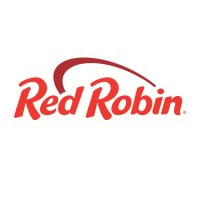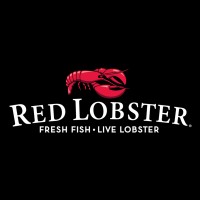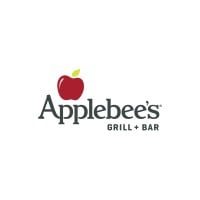Company Cyber Security Posture
NANA
NA Company Details
NA
NA
NA
NA
NA
NA
Scan still pending
NA
NA
Between 200 and 800
This score is AI-generated and less favored by cyber insurers, who prefer the TPRM score.
 NA Global Score
NA Global Score.png)

Company Scoring based on AI Models
| Model Name | Date | Description | Current Score Difference | Score |
|---|---|---|---|---|
| AVERAGE-Industry | 03-12-2025 | This score represents the average cybersecurity rating of companies already scanned within the same industry. It provides a benchmark to compare an individual company's security posture against its industry peers. | N/A | Between 200 and 800 |
Company Cyber Security News & History
| Entity | Type | Severity | Impact | Seen | Url ID | Details | View |
|---|
Company Subsidiaries

NA
Access Data Using Our API

Get company history
.png)
NA Cyber Security News
Yum China unveils AI tool in a bid to boost efficiency
Yum China Holdings , said on Friday it has launched a new AI-enabled hands-free assistant tool at certain KFC stores in a bid to boost ...
Yum China pilots AI-enabled restaurant management tool
Yum China has launched a pilot of an AI-enabled assistant, Q-Smart, which is designed for restaurant management.
Former Goldman Investment Banker Joins Yum China Board Of Directors
Former Goldman Investment Banker Joins Yum China Board Of Directors. Forbes China. ByRussell Flannery,. Senior Contributor. Forbes contributors ...
Yum China Beats Q4 Earnings Estimates, Hikes Dividend, Stock Up
Yum China Holdings, Inc. YUMC reported fourth-quarter 2024 results, with earnings beating the Zacks Consensus Estimate but revenues missing ...
Nasdaq Slumps Amid Chip Carnage: Yum China, Exelon, Kroger In Focus
Alissa Coram and Ken Shreve analyze Wednesday's market action and discuss key stocks to watch on Stock Market Today.
From China+2 to cybersecurity: key supply chain strategies for APAC businesses
Rising geopolitical tension and trade uncertainties are causing businesses to reassess their supply chain strategies. In the Asia-Pacific (APAC) ...
The CEO behind KFC and Taco Bell in China explains why bosses aren’t allowed to promote their direct reports
The CEO behind KFC and Taco Bell in China explains why bosses aren't allowed to promote their direct reports.
Unusual Options Alert: Yum China Could Be Setting Up A ‘Lazarus Trade’
After several weeks of volatility, the market could be tipping its hand that a bounce back may be imminent in YUMC stock.
Yum China champions smart restaurant management
Yum China Holdings, Inc. aims to automate using artificial intelligence (AI) most back-of-house operations in five years.

NA Similar Companies

Papa Johns
Papa Johns seeks people who have an entrepreneurial spirit and share our philosophy for success. Hands-on training, a clean and safe work environment, quality business practices, advancement opportunities and meaningful work combine to produce not only the best pizza, but also the best team members!

Taco Bell
Taco Bell was born and raised in California and has been around since 1962. We went from selling everyone’s favorite Crunchy Tacos on the West Coast to a global brand with 8,200+ restaurants, 350 franchise organizations, that serve 42+ million fans each week around the globe. We’re not only the larg

Red Robin
Since opening in 1969 in Seattle, Washington, Red Robin has welcomed Guests to our casual dining restaurants in the U.S. and Canada, connecting people around craveable food and fun in a relaxed, playful atmosphere. Our people are the foundation of our success. We aim to be an inclusive employer of

Red Lobster
With 58,000 employees and more than 700 restaurants in the United States and Canada, and a growing international presence, Red Lobster is the world’s largest seafood restaurant company. Our vision is to be where the world goes for seafood now and for generations. Red Lobster is an innovative, v

Chick-fil-A Corporate Support Center
At its Atlanta headquarters, known as the Corporate Support Center, Chick-fil-A, Inc. offers full-time careers in various fields such as Digital Transformation & Technology, Financial Services & Accounting, Enterprise Analytics, Restaurant Development, Early Talent Programs and more. Our team of mor

Apple American Group LLC
Flynn Group | Applebee’s owns and operates over 440 Applebee’s Neighborhood Grill and Bar restaurants in 23 states. With annualized sales of over $1.3B and over 21,000 employees, Flynn Group | Applebee’s is the largest franchisee in the Applebee’s system, and the largest U.S. casual dining franchis

Frequently Asked Questions
Explore insights on cybersecurity incidents, risk posture, and Rankiteo's assessments.
NA CyberSecurity History Information
How many cyber incidents has NA faced?
Total Incidents: According to Rankiteo, NA has faced 0 incidents in the past.
What types of cybersecurity incidents have occurred at NA?
Incident Types: The types of cybersecurity incidents that have occurred include .
Additional Questions
What Do We Measure?
















Every week, Rankiteo analyzes billions of signals to give organizations a sharper, faster view of emerging risks. With deeper, more actionable intelligence at their fingertips, security teams can outpace threat actors, respond instantly to Zero-Day attacks, and dramatically shrink their risk exposure window.
These are some of the factors we use to calculate the overall score:
Identify exposed access points, detect misconfigured SSL certificates, and uncover vulnerabilities across the network infrastructure.
Gain visibility into the software components used within an organization to detect vulnerabilities, manage risk, and ensure supply chain security.
Monitor and manage all IT assets and their configurations to ensure accurate, real-time visibility across the company's technology environment.
Leverage real-time insights on active threats, malware campaigns, and emerging vulnerabilities to proactively defend against evolving cyberattacks.




